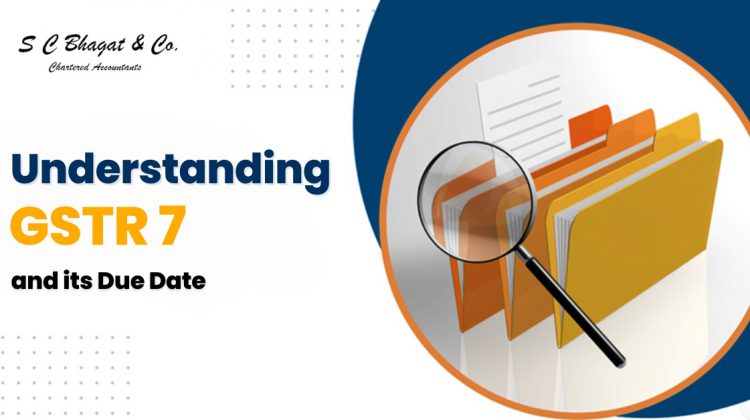What Do You Mean by The Term GSTR 7?
GSTR 7 stands for Goods and Services Tax Return 7. It is a monthly return filed by taxpayers who are required to deduct tax at source (TDS) under the GST regime. This return contains details of TDS deducted, collected, and paid during the month.
Major Components of GSTR-7:
The major components of GSTR-7 include details such as:
- Tax Deductor Information: This includes the legal name and GSTIN of the deductor.
- Details of TDS Deducted: It comprises the GSTIN of the deductee, invoice-wise, and rate-wise TDS details.
- TDS Liability: The total amount of TDS liability for the month.
- TDS Paid: It includes the details of TDS paid and any late fees or penalty, if applicable.
What is the Importance of GSTR-7?
GSTR-7 holds significant importance as it ensures compliance with the TDS provisions under GST. It facilitates transparency and accountability in tax deductions made by various entities.
Conditions for Filing GSTR 7
To file GSTR 7, the following conditions must be met:
- The taxpayer must be registered as a deductor under GST.
- TDS must have been deducted during the month for which the return is being filed.
Who Can Deduct TDS under GST?
Any entity or individual making specified payments like salaries, contractor payments, etc., which are subject to TDS under GST, is required to deduct TDS and file GSTR-7.
What Information is Needed in GSTR-7?
The information required in GSTR-7 includes:
- GSTIN of the deductor and deductee
- Invoice-wise details of TDS deducted
- Total TDS liability and payment details
Due Date for filing GSTR 7 Return February 2024
For the month of February 2024, the due date for filing GSTR-7 is the 10th of March 2024. Taxpayers must ensure timely filing to avoid any late fees or penalties.
GSTR 7 Late Fees and Penalty
In case of late filing of GSTR-7, taxpayers are liable to pay late fees of Rs. 100 per day under CGST and Rs. 100 per day under SGST, subject to a maximum of Rs. 5,000. Additionally, interest is applicable on the outstanding tax amount.
In conclusion, GSTR-7 plays a crucial role in the GST regime by ensuring accurate reporting and compliance with TDS provisions. Taxpayers must adhere to the prescribed due dates and requirements to avoid any penalties or legal repercussions.>
FAQs:
- What happens if I miss the due date for filing GSTR-7?
- Missing the due date may attract late fees and penalties, and it can also lead to non-compliance issues with the tax authorities.
- Can I revise my GSTR-7 after filing?
- No, GSTR-7 once filed cannot be revised. Any corrections or updates can be made in subsequent months’ returns.
- Is it mandatory to file GSTR-7 even if no TDS is deducted during the month?
- Yes, if you are registered as a deductor under GST, you must file GSTR-7 even if no TDS is deducted during the month.
- What documents are required for filing GSTR-7?
- Documents such as invoices, challans, and details of TDS deducted are required for filing GSTR-7.
- Can I claim a refund of excess TDS deducted in GSTR-7?
- Yes, excess TDS deducted can be claimed as a refund by filing a refund application with the tax authorities.

